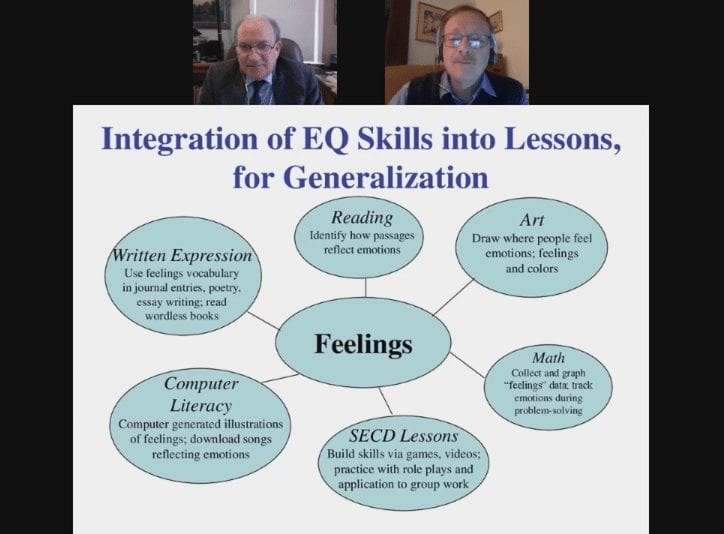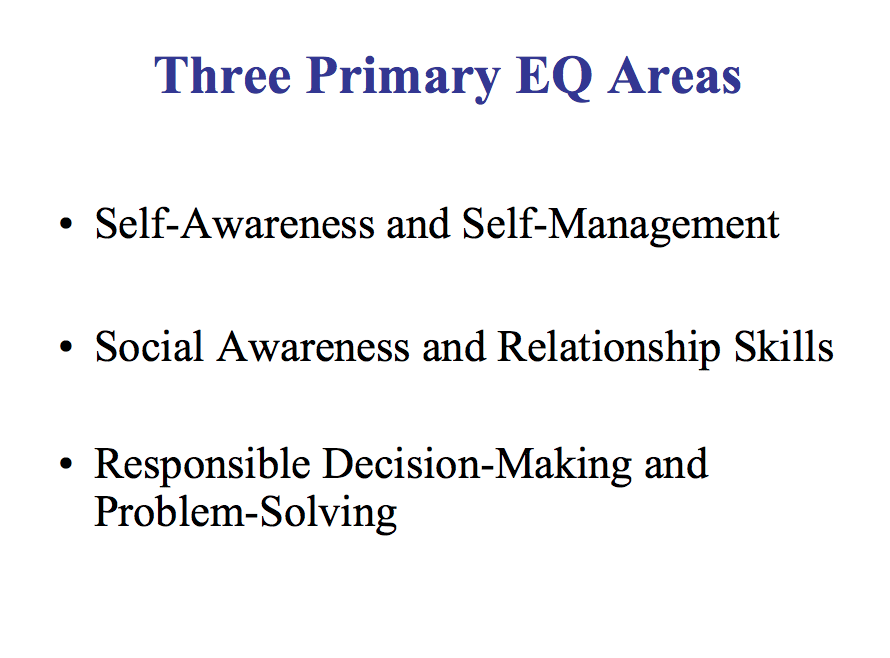Making the Case to Integrate EQ Education into the Classroom
Social-emotional learning. Character education. Bullying prevention. These programs all fall under the larger umbrella of emotional intelligence (EQ)—the ability to manage one’s feelings and interact positively with other people. While many schools may touch on it during the school year, Maurice J. Elias, Ph.D., and Steven E. Tobias, Psy.D., authors of Boost Emotional Intelligence in Students, advocate for more formal training in EQ. During their recent edWebinar “How to Boost Emotional Intelligence in Students,” they explained how data shows a high EQ is “more highly correlated with career success than academic skills.” More important, in order to help kids retain their EQ skills, they said schools need to adopt a systematic approach to improving emotional awareness.
There are three primary areas of EQ to address. First, self-awareness and self-management focuses on helping children understand their own EQ strengths and challenges. Students learn how to not only recognize and talk about their feelings but also work on maintaining and achieving self-control. The purpose of this skill set is to teach students how to be their best selves.
Next, skill area two, social awareness and relationship skills, asks students to learn to read the social and emotional cues of others. Here, the goal is to not only to be able to anticipate and defuse their own trigger situations, but for kids to learn how to empathize with others. Empathy is not limited to recognizing the emotional needs of others, though, but also discusses understanding cultural distinctions. With this skill kids learn how to “code switch” and operate in different ways with different people.
Skill area three has students build on their previous lessons to develop problem-solving strategies they can adapt to a variety of situations. The presenters noted that employers are looking for individuals that not only have the intellectual skills but also those that can handle stress, value responsibility, resolve conflicts, and find creative solutions to problems. These are all hallmarks of EQ.
Knowing that time can be limited at school for EQ education, Elias and Tobias offered guidance on what skills to cover first. If EQ is part of a year-long curriculum, then teachers should educate children in all three skill areas. If there are 21 or more EQ sessions, then teachers should start with skill area one and then choose skill area two or three for follow up. However, if schools cannot accommodate numerous sessions, it is best to concentrate on skill area one. The key is for teachers to provide students with enough opportunities to internalize the lessons. In addition to providing homework for the EQ curriculum, teachers need to communicate with their team members so that the other educators encourage the students to use their new skills.
Finally, Elias and Tobias stressed the importance of looking at individual student improvement rather than relying on a standardized EQ assessment. “There are scales that are out there, but our feeling is that the best thing you can do is to monitor what you are teaching. The things we are talking about are not really complicated to monitor,” said Elias. “I think the idea of using some external assessment is not the best strategy…those conversations [with your colleagues] and those indicators that you can create based on the specifics that you are doing are going to be far more useful to you than a scale that was created—it might be reliable, it might be valid—but it’s not focusing on the specific skills that you are working on.”
This broadcast was hosted by edWeb.net and Free Spirit Publishing.
This article was modified and published by eSchool News.
About the Presenters
Maurice J. Elias, Ph.D. is a professor and former director of clinical training in the Department of Psychology at Rutgers University. He is also director of the Rutgers Social-Emotional and Character Development Lab, academic director of the Collaborative Center for Community-Based Research and Service, and founding member of the Leadership Team for the Collaborative for Academic, Social, and Emotional Learning (CASEL). Dr. Elias lectures nationally and internationally and devotes his research and writing to the areas of social-emotional and character development in children, schools, and families. He is a licensed psychologist and writes a blog on social-emotional and character development for the George Lucas Educational Foundation at www.edutopia.org. He lives in New Jersey with his wife, Ellen, near their children and grandchildren.
Steven E. Tobias, Psy.D. is the director of the Center for Child & Family Development in Morristown, New Jersey. He has over thirty years of experience working with children, parents, families, and schools. Dr. Tobias feels a strong commitment to children’s social and emotional development and provides consultation to schools as a way of reaching many children, including those who are underserved in terms of their social and emotional needs. He has co-authored several books with Dr. Maurice Elias, including Emotionally Intelligent Parenting and Raising Emotionally Intelligent Teenagers. He has given lectures throughout the United States on topics related to parenting and children’s emotional development. Dr. Tobias lives in New Jersey.
Join the Community
Social-Emotional Learning, Positive Behavior, and Student Achievement is a free professional learning community that offers a place for educators to explore practical, effective ways to integrate social-emotional learning, inclusive teaching practice, and higher-level instruction.






Comments are closed.